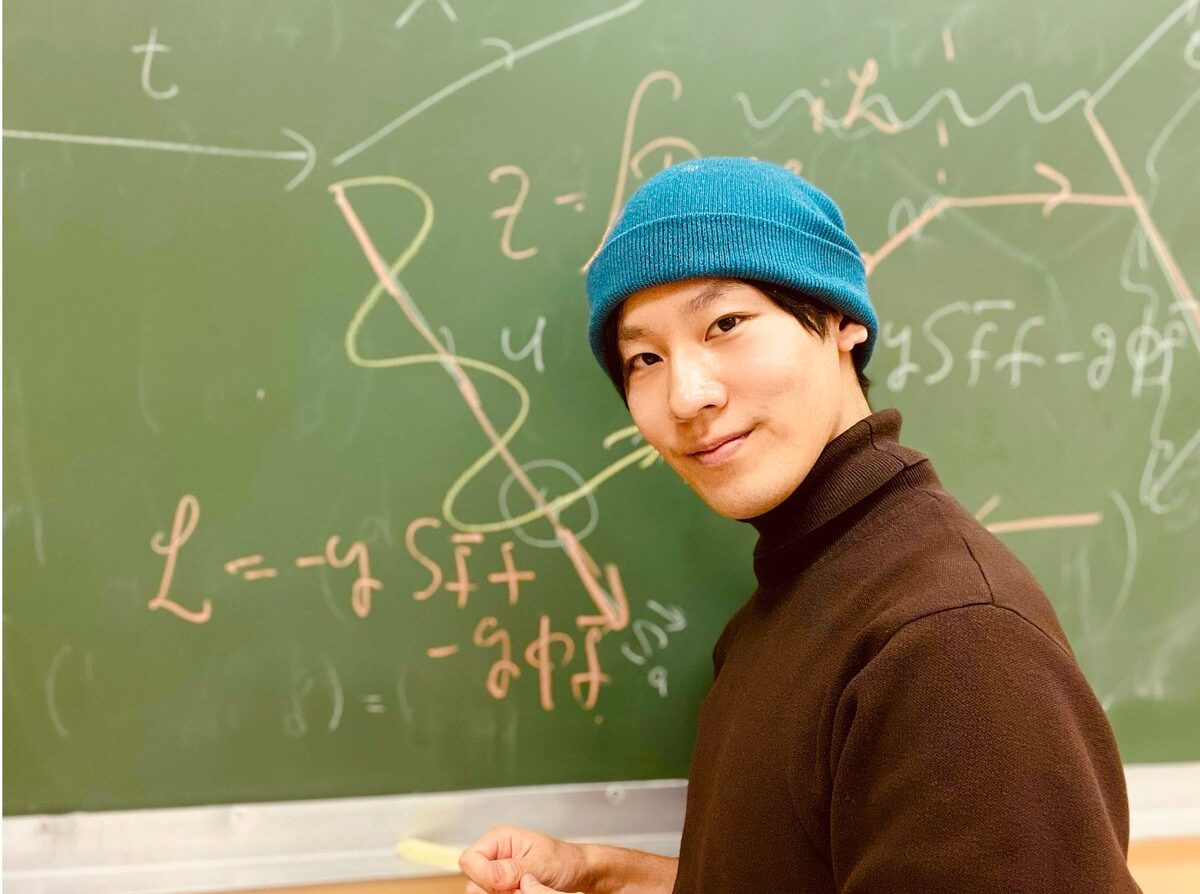At the University of Wrocław (UWr), education is all about encouraging curiosity, supporting wide-ranging interests, and giving young people the chance to follow their passions. For generations, the university has been a place where students and researchers come together to ask big questions and explore bold ideas. One of them is Misaki Ohta, whose journey from childhood wonder to theoretical physics shows the spirit of discovery that UWr is proud to nurture.
Growing up in Japan, Ohta was fascinated by geometric patterns and the shifting shapes of water. Even at the age of three or four, he sensed there was something profound hidden in these natural forms, as if they reflected an unseen order in the universe. That quiet fascination turned into a deeper quest in the fourth grade, when he first encountered Einstein’s theory of relativity. The idea was so striking that it sparked a lifelong question in his mind: How does the world truly work?
Around the same time, his school introduced the formula “distance = speed × time.” While simple for most, Ohta could not help but wonder what “time” really meant. His persistent questions often frustrated his teacher, but the mystery lingered until relativity provided a new perspective. That moment became a turning point, opening a door to entirely new ways of thinking. From then on, Ohta pursued theoretical physics with a determination to understand the universe’s true essence. To him, it was more than an academic subject; it was a dialogue with the hidden truths of existence.
When deciding where to study, the UWr, one of Poland’s most prestigious institutions, with over 300 years of academic history, stood out. Its strong tradition in theoretical physics and its role in shaping generations of talented scientists appealed to him deeply. “The university is known for attracting many talented individuals and has a rich academic history,” he says. “Most notably, it was once home to Professor Jan Łopuszański, a Polish theoretical physicist, particularly known for co-authoring the Haag–Łopuszański–Sohnius theorem on supersymmetry.”
The professor’s book, Introduction to Symmetry and Supersymmetry in Quantum Field Theory, remains a foundational text in the field and continues to inspire Ohta both as a researcher and as a person.

A two-dimensional orthogonal projection of a 24-dimensional geometric structure constructed using the sporadic simple group Mathieu M12. Source: University of Wroclaw
Today, UWr is entering an exciting new phase through its participation in the IDUB programme, a national initiative by the Polish Ministry of Science and Higher Education. The goal is to help top Polish universities reach a competitive global standard in research and education. This programme brings new resources to the university, including enhanced research facilities, increased support for young scientists, and more scholarships. It also promotes interdisciplinary work and strengthens doctoral studies. For students and researchers like Ohta, this means a more dynamic academic environment that builds deeper engagement with their work.
As theoretical physics advances, its concepts become increasingly abstract and challenging. Quantum field theory, in particular, stands out as a complex area filled with both mathematical and conceptual difficulties. Ohta finds that his unique background helps him navigate these challenges. Besides being a physics student, he is also a painter represented by Shibunkaku, one of Japan’s most respected art galleries. The interplay between his work in painting and physics allows him to translate abstract numerical data into visual forms. This back-and-forth between abstraction and concrete imagery helps him approach problems with intuition and creativity, giving him an advantage in understanding complex theories.
This blend of talents also influences how Ohta experiences the academic community at UWr. The theoretical physics programme is supported by a group of exceptionally talented peers and faculty members at the Faculty of Physics and Astronomy. Whenever he faces academic challenges, he finds that discussions with professors, PhD students, and classmates help him overcome obstacles.
Lectures are always delivered with enthusiasm and great care. “Among them, those most closely aligned with my interests were Professor Falk Hassler’s courses on AdS/CFT correspondence, Lie algebras, and string theory, as well as Professor Pok Man Lo’s lectures on hadrons,” he says.
These classes deepened Ohta’s knowledge while revealing even more fundamental questions and broadening his perspective on the universe.

“Flowers near the Atelier” oil painting F12 Misaki Ohta Source: Misaki Ohta
Beyond academic rigour, Ohta appreciates the personalised attention professors provide to students. While discussions can be demanding and students are expected to be well prepared, the faculty never gives up on those who struggle. Their strictness comes from a genuine desire to see learners grow and succeed.
Ohta trusts their guidance. “They don’t just teach the subject — they often explain why the field exists, and share the background and big ideas behind it,” he says. “This makes learning deeper and much more meaningful.”
Another reason UWr appeals to international students like Ohta is its strong academic community and wide range of opportunities. The Faculty of Physics and Astronomy regularly hosts seminars with guest speakers from around the world. The university’s active involvement in the Erasmus programme unlocks international exchange for students. Events like the annual Karpacz School of Theoretical Physics further builds networks.
Learn more about studying Theoretical Physics at the University of Wrocław.
Follow University of Wrocław on Facebook, Instagram, YouTube, TikTok, and LinkedIn










